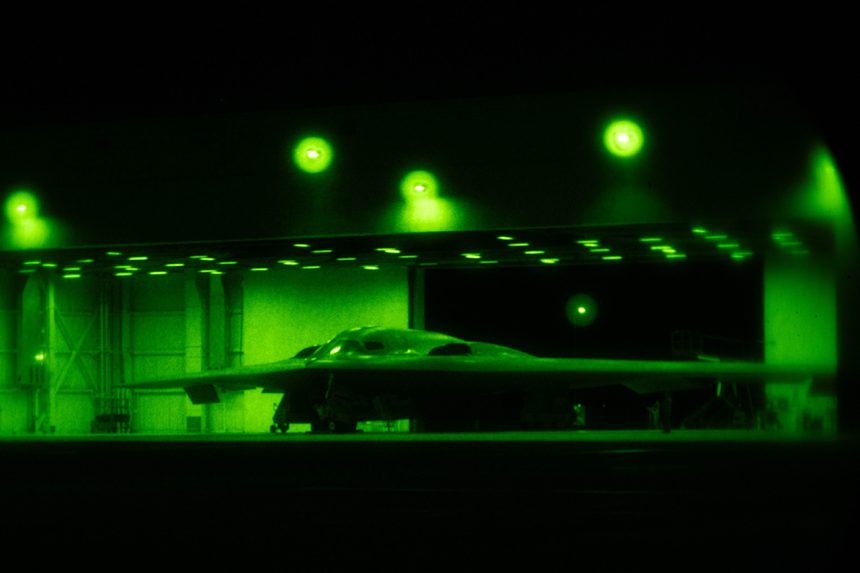According to the U.S. Department of Defense, Operation Midnight Hammer, the precision B-2 raid that hit key Iranian nuclear sites, had its roots in a classified mission that began over a decade ago.
Operation Midnight Hammer, the airstrike that took out two of Iran’s most hardened nuclear facilities was not the result of a last-minute decision but the culmination of fifteen years of planning, intelligence-gathering, weapons development, and training. This was explained by Defense Secretary Pete Hegseth and Air Force Gen. Dan Caine, chairman of the Joint Chiefs of Staff, during a press briefing at the Pentagon on June 26, 2025.
Chairman of the Joint Chiefs of Staff, Gen. Dan “Razin” Caine, shows a test demonstration of the GBU-57A/B MOP (Massive Ordnance Penetrator) 30,000lb “Bunker Buster” Bomb during today’s press conference at the Pentagon.
Gen. Caine stated that 15 years went into working on the… pic.twitter.com/ghoVHs1vQM
— OSINTdefender (@sentdefender) June 26, 2025
As we reported in our earlier articles on The Aviationist (here and here), the operation was a masterclass in precision and deception. Now, newly disclosed details shed light on how the U.S. had prepared for this moment since 2009, when the Defense Threat Reduction Agency (DTRA) first began studying the fortified Iranian sites.
The DoD confirms that the primary target of the strike was the Fordow uranium enrichment site, built deep in the mountains south of Tehran. According to Gen. Dan Caine, two DTRA officers had been working on the challenge for over a decade. After analyzing early satellite imagery and intelligence, they realized that no existing weapon could guarantee the destruction of Fordow’s underground chambers. This led to the development of the GBU-57, the Massive Ordnance Penetrator, designed specifically to defeat heavily fortified underground facilities.
On June 21, 2025, at 6:45PM Eastern Time (2:15AM June 22 in Iran), a formation of B-2 Spirit stealth bombers from Whiteman Air Force Base carried out the strike. Fourteen GBU-57 bombs were dropped on the Iranian nuclear facilities. All weapons functioned as intended, hitting their targets with full effectiveness. One B-2 pilot reportedly described the detonation as “the brightest explosion I’ve ever seen. It literally looked like daylight.”
Defense Secretary Pete Hegseth later explained that the strike sequence was designed for maximum penetration. The first GBU-57 was used to breach a reinforced concrete structure, creating the central crater visible in satellite imagery. The remaining bombs were delivered through the same opening to ensure complete destruction of the internal target. Hegseth also clarified that what appeared to be two additional impact points were, in fact, part of the facility’s pre-existing ventilation system.
Pete Hegseth explained that the first GBU-57 was used to break through a concrete cover (middle crater), allowing the remaining five to follow through the same opening. He added that what appeared to be two other impact holes were actually part of the site’s ventilation system.… pic.twitter.com/iCE1XCtL9y
— Open Source Intel (@Osint613) June 26, 2025
The bomber crews, composed of active-duty Air Force and Missouri National Guard pilots, flew a non-stop 36-hour round trip covering more than 13,000 miles. “When the crews went to work on Friday, they kissed their loved ones goodbye, not knowing when or if they’d be home,” Gen. Caine said. “On Sunday, when those jets returned to Whiteman, their families were there — flags flying and tears flowing.”
Why Were Three Holes Observed at each of the Two Impact Points Above Fordow?
During the press briefing led by Chairman of the Joint Chiefs of Staff, Gen. Dan Caine, and Secretary of Defense Pete Hagesth, the following infographic in the quoted post was presented.
It illustrates… https://t.co/Dt235VmXPy pic.twitter.com/9ZquGXd4Fs
— Ben Tzion Macales (@BenTzionMacales) June 26, 2025
But the operation didn’t end with the successful strike. Iranian forces retaliated by launching missiles at Al Udeid Air Base in Qatar, home to U.S. Central Command’s forward headquarters. In what has now been described as the largest single Patriot missile engagement in U.S. military history, American and Qatari air defenders intercepted the incoming barrage in real time. With just seconds to respond, U.S. soldiers, some as young as 21, made rapid decisions with strategic consequences.
Defense Secretary Hegseth called the strike “an historically successful attack,” stating that it led to a cease-fire agreement and the end of the 12-day conflict between Iran and Israel. He credited the mission with creating the conditions for peace and preventing the emergence of a nuclear-armed Iran.
According to the Pentagon, Operation Midnight Hammer will be studied for years to come not only for its execution, but for the strategic patience, technological innovation, and human skill that made it possible. From the first classified briefing in 2009 to the final mission update just hours before takeoff, every phase of the plan was crafted with one objective in mind: neutralize the target at the time and place of the nation’s choosing.









